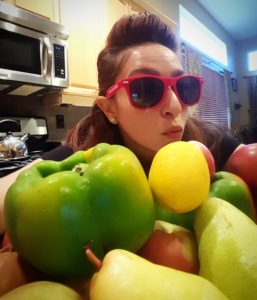 What makes a fruit or vegetable organic?
What makes a fruit or vegetable organic?
Many feel that the term “organic” is just a marketing ploy to hike up costs, and while the greatest marketers of the world do use buzz words like “clean” or “natural,” if a food is USDA certified organic, it has gone through years of qualifications to be categorized as such. The quick description is that organic fruits and vegetables are grown without chemical pesticides. These farmers use certain plants and other natural deterrents to rid pests from eating their crops. In effect, these foods are more expensive because the maintenance is higher, so there’s a smaller quantity grown at a time. These foods also tend to perish more quickly without chemicals sustaining their viability.
So does it really matter if you eat conventional (non-organic) fruits and vegetables? Look, eating an apple is always better than not eating an apple, but organic IS better for you in most cases. And when you begin to eat organic fruits and vegetables regularly, the taste difference is unbelievable. The fruits are sweeter, and the vegetables have more flavor overall! As sad as it is, eating the best for you does get expensive, so we develop little tips and tricks to make eating healthy a bit easier. For example, the dirty dozen and the clean fifteen…
The Dirty Dozen, and The Clean Fifteen
If you know nothing else about organic fruits and vegetables, you must know the dirty dozen and the clean 15. This is the list you should live your grocery shopping life by. The dirty dozen are the “dirtiest” fruits and vegetables, meaning they soak up the bad stuff like chemicals and pesticides and retain that in their meat. When you eat it, you also ingest these carcinogens. As you would assume, the dirtiest fruits/vegetables are those with the softest skins, but other things on this list will surprise you, like apples.
The clean 15 are those fruits and vegetables that are the safest to eat conventionally. A quick wash and rub with water should be fine to eat these foods that don’t tend to absorb the bad stuff.
These lists are developed and updated each year by the Environmental Working Group (EWG) after thorough studies of thousands of fruits and vegetables tested. See below for the most updated lists of clean and dirty fruits and veggies, and be sure to bring this list with you on your next produce run!
2018 Dirty Dozen (with worst being #1)
- Strawberries
- Spinach
- Nectarines
- Apples
- Grapes
- Peaches
- Cherries
- Pears
- Tomatoes
- Celery
- Potatoes
- Sweet Bell Peppers
If there was a 13th item in this list, it would be hot peppers because in studies, they still find trace amounts of toxic pesticides.
2018 Clean Fifteen
- Avocados
- Sweet Corn
- Pineapples
- Cabbages
- Onions
- Frozen Sweet Peas
- Papayas
- Asparagus
- Mangos
- Eggplants
- Honeydew Melons
- Kiwis
- Cantaloupes
- Cauliflower
- Broccoli
For a comprehensive analysis of these updated lists and why certain foods were categorized as they were, check out Dr. Josh Axe’s recent article.

Thank you Syd. Aubrey and I were in Whole Foods and we were discussing this. Can’t wait to share with her. Thank you for the information.
AP…
Awesome! So glad to hear it! If there’s anything else you guys have been debating lately that you’d like me to dive into on here, let me know 🙂